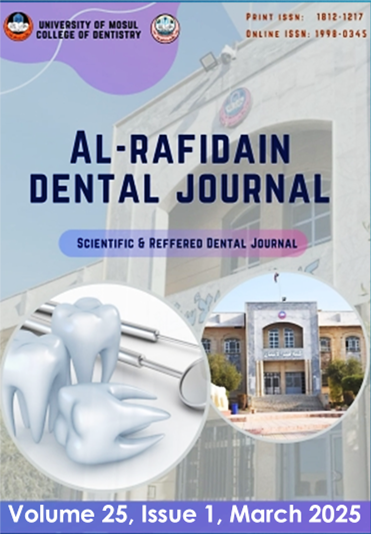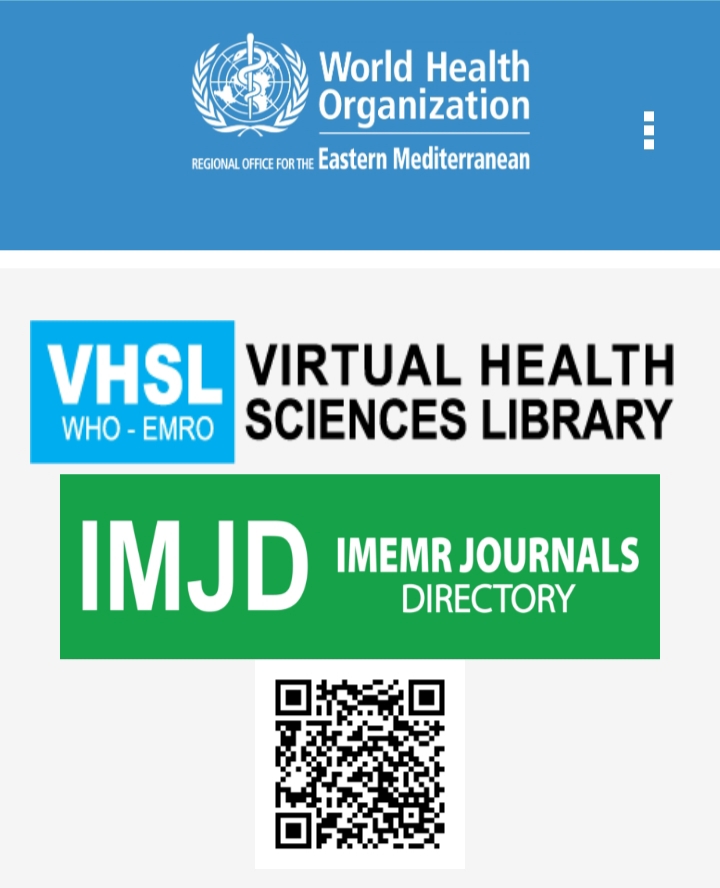Accuracy of Intraoral Scanner versus Conventional Method for Bolton Ratio Assessment in A Sample of Duhok Population
Abstract
Aims: The study aimed to compare the accuracy and reliability of the measurement of the anterior and overall Bolton ratio between plaster models (by silicone impressions) and intraoral scanner (IOS) images (by TRIOS scanner). Materials and Methods: Fifty-one patients were selected from the Duhok University College of Dentistry - Prevention, Orthodontic & Pedodontics Department auditors. Their ages ranged between 18 and 35 years. Each one underwent a silicone impression of the jaws to obtain the plaster models and IOS digital images to obtain the digital models. Both records formed the two study groups: the plaster model group (PMG) and the IOS group (IOSG). Measurements (the anterior and overall Bolton's ratio) were made on plaster and IOS digital images. The Bolton ratios were re-measured on 5 samples for each group by the same researcher a month after the first measurement to determine the accuracy of the re-measurement, and the inter-examiner intraclass correlation coefficients (ICCs) were applied. A paired T-test was conducted to compare the two groups and to study the reliability of the measurement. Results: When performing the intraclass correlation (ICC), the results showed the reliability of Bolton ratio measurements in the plaster models and IOS digital images (ICC = 0.998, 0.991 respectively). There were no statistically significant differences between the plaster models and IOS groups concerning the anterior Bolton ratio p = 0.999. There were no statistically significant differences between the plaster models and IOS groups concerning the overall Bolton ratio p = 0.971. Conclusions: Plaster models (by silicone impressions) or IOS digital images (by TRIOS scanner) can be used in orthodontic diagnosis to measure the Bolton ratio (anterior and overall) with the same accuracy and reliability.
References
- Zimmermann M, Mehl A, Mrmann W, Reich SJIjocd. Intraoral scanning systems-a current overview. 2015;18(2):101-29.
- Akyalcin SJD. Are digital models replacing plaster casts. 2011;1(2):1-2.
- Al-Hassiny A. Fundamentals of Computer-Aided Design (CAD) in Dental Healthcare: From Basics to Beyond. 3D Printing in Oral Health Science: Applications and Future Directions: Springer; 2022. p. 93-119.
- Alghazzawi TFJJopr. Advancements in CAD/CAM technology: Options for practical implementation. 2016;60(2):72-84.
- Ali AOJD. Accuracy of Digital Impressions Achieved from Five Different Digital Impression Systems. 2015;5:1-6.
- Baheti M, Soni U, Gharat N, et al. Intra-oral scanners: a new eye in dentistry. 2015;2(3):1023.
- Bolton WAJAJoO. The clinical application of a tooth-size analysis. 1962;48(7):504-29.
- Bolton WAJTAO. Disharmony in tooth size and its relation to the analysis and treatment of malocclusion. 1958;28(3):113-30.
- Camardella LT, Vilella OV, van Hezel MM, Breuning KHJJoOOFdK. Accuracy of stereolithographically printed digital models compared to plaster models. 2017;78(5):394-402.
- Chen LC, Xu Z. Innovative 3D dental measurement for tooth model restoration. Paper presented at: Key Engineering Materials, 2005.
- Cuperus AMR, Harms MC, Rangel FA, et al. Dental models made with an intraoral scanner: a validation study. 2012;142(3):308-13.
- Hong-Seok P, Chintal SJPE. Development of high speed and high accuracy 3D dental intra oral scanner. 2015;100:1174-81.
- Mullen SR, Martin CA, Ngan P, Gladwin MJAJoO, Orthopedics D. Accuracy of space analysis with emodels and plaster models. 2007;132(3):346-52.
- Naidu D, Freer TJJAJoO, Orthopedics D. Validity, reliability, and reproducibility of the iOC intraoral scanner: a comparison of tooth widths and Bolton ratios. 2013;144(2):304-10.
- Proffit WR, Fields HW, Fields HW, Larson BE, Sarver DM. Contemporary Orthodontics: Elsevier; 2018.
- Tomita Y, Uechi J, Konno M, et al. Accuracy of digital models generated by conventional impression/plaster-model methods and intraoral scanning. 2018;37(4):628-33.
- Wiranto MG, Engelbrecht WP, Nolthenius HET, et al. Validity, reliability, and reproducibility of linear measurements on digital models obtained from intraoral and cone-beam computed tomography scans of alginate impressions. 2013;143(1):140-47.












